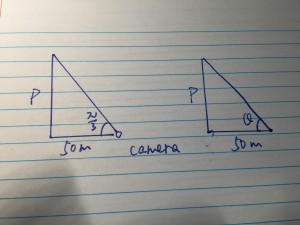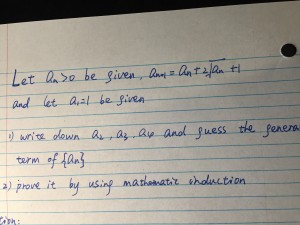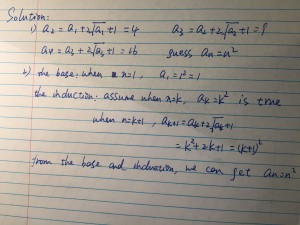Monthly Archives: November 2015
A related rate question
You are now a traffic policeman in UBC, and you wanna determine whether someone breaks the traffic rule. You set a camera 50m away from the road, which can automatically track cars passing by. There was once upon a time when you saw a cool Lamborghini passing by. Thinking that it was abnormal, you quickly checked the camera and it recorded that it rotated at a constant speed of 1/10 rad per second and went through 60 degree clockwise from the line vertical to the road. You knew the restricted speed at the campus is 30km/h, and wanted to determine whether the car broke the rule.

let the distance the car has traveled be P and the angle the camera has rotated be Θ,by drawing a triangle ,we can get a relation P/50=tanΘ. We differentiate both sides and get
1/50 dP/dt=sec²Θ dΘ/dt, we know dΘ/dt is 1/10 rad/s and since f(Θ)=sec²Θ is increasing in the interval [0,π/3]. So the biggest speed detected, which is dP/dt, appears at the time when Θ is π/3. sec²(π/3)=4 , so dP/dt (at Θ=π/3) =4×50×1/10=20m/s= 72km/h>30km/h. So the car broke the traffic rule.

